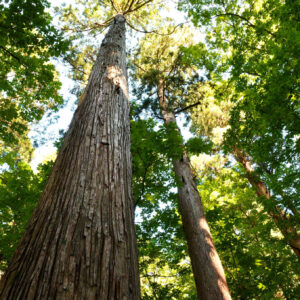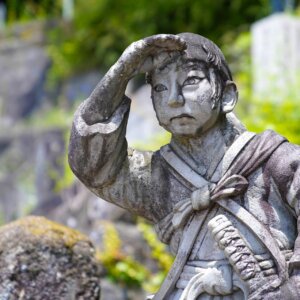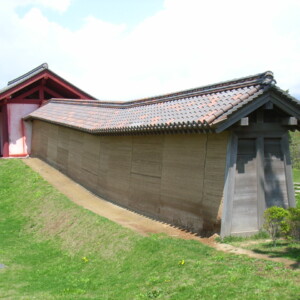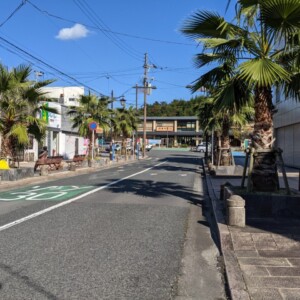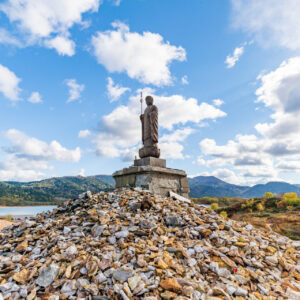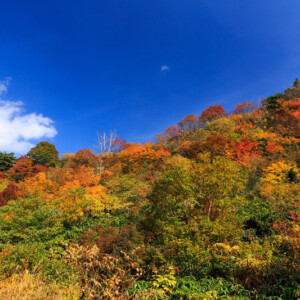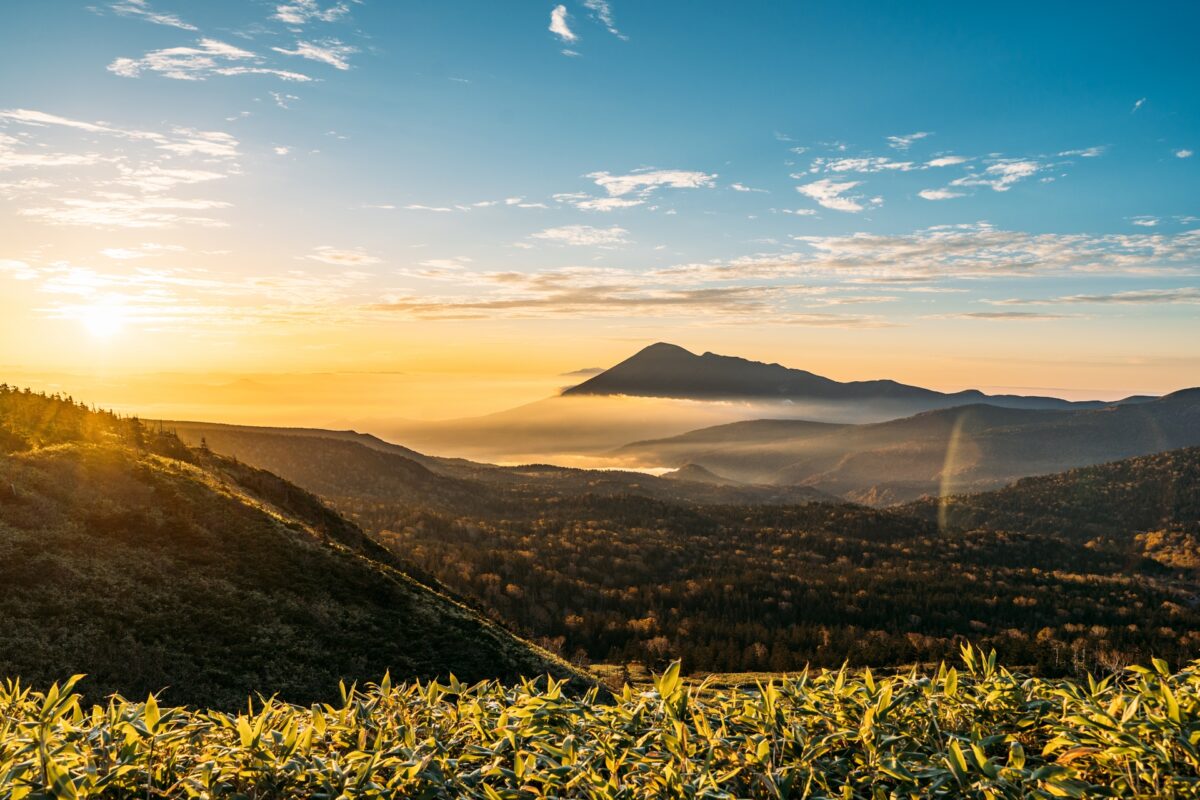
Is "Hachimantai" Table Mountain in Tohoku? A paradise of a plateau between volcanoes and marshlands [Akita/Iwate]
table of contents
Hachimantai which spans Iwate and Akita prefectures , is a mountainous region with a gentle mountain profile at an altitude of 1,614 meters, and is an area rich in nature, making it one of Japan's 100 most famous mountains.
It is a corner of Towada Hachimantai National Park and attracts many climbers and tourists as it offers a wide variety of attractions, including volcanic topography, marshlands, seasonal plants, and hot springs.
The mysterious land cultivated by the volcano
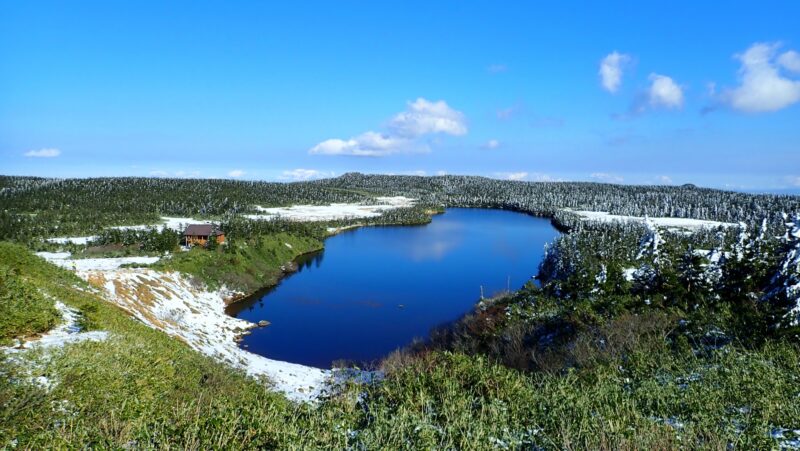
Hachimantai is a volcano with a generally flat summit, and has a terrain close to what Table Mountain (flat summit volcano) This was formed by past volcanic activity and many years of erosion. The summit is dotted with lakes such as Hachimanuma, Gamauma, and Kagamiuma, which are crater lakes, and marshlands are spread around. Especially in the summer, alpine plants such as cottontail and monkfish bloom, making visitors happy.
A unique benefit of volcanic areas is that geothermal activity is also active, and there are many hot spring resorts scattered around Hachimantai.
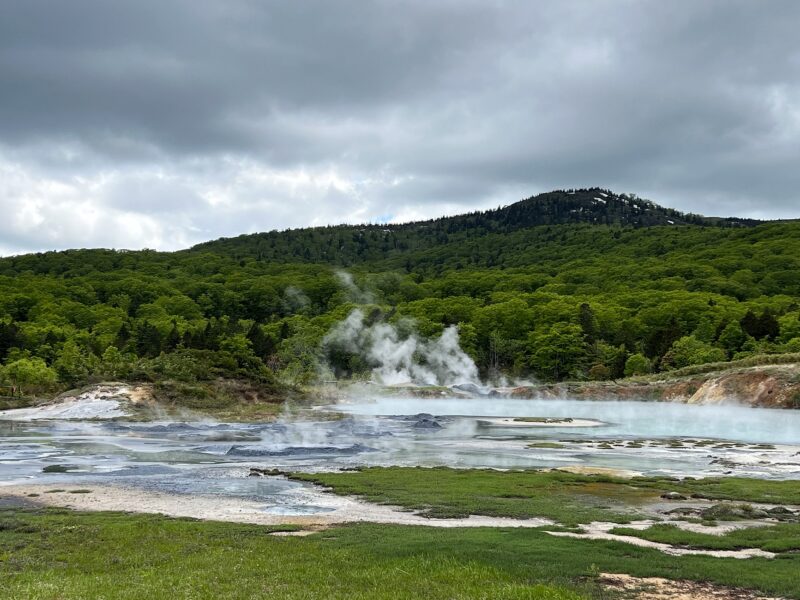
In particular Goseikake Onsen is known as a hot spring resort that is described as "come on horseback and go home with a stool." It is said that seriously ill people once visited on horseback and were able to walk on their own on their way home after the hot spring treatment was completed. You can still experience a variety of bathing methods that make use of the bounty of the volcano, such as mud baths and boxed steaming baths.
Fujisana Onsen located at an altitude of 1,400 meters , is also known as the secret hot spring of the sky, and you can enjoy an open-air bath with a spectacular view.
Dragon Eye, a limited edition view of spring
the natural phenomenon known as "Dragon Eye" that appears in Kagamiuma has been gaining attention on social media

This is a pattern that appears like a dragon's eye-like pattern, as the snow melts around the center leaves snow, leaving the water in a circular shape. Due to limited timing, many tourists come to see it during the best season to see it.
Because it can only be viewed for a limited period of time, the Akita Prefecture official website regularly posts information on the status of Dragon Eye's eye opening every year. It is recommended to check this site before you visit.
You can see this phenomenon in Kagamiuma, and it takes about 20 minutes to go to Hachimantai Summit Rest House via the promenade. Along the way, there is a wooden path walking through the high marshlands, allowing you to easily enjoy the air and scenery at an altitude of 1,600 meters.
Hachimantai Aspee Line and the charm of the season
The mountain roads known as the Hachimantai Aspite Line and the Jukai Line essential for sightseeing in Hachimantai In particular, the Aspite Line has become popular as a spring tradition, with snow corridors
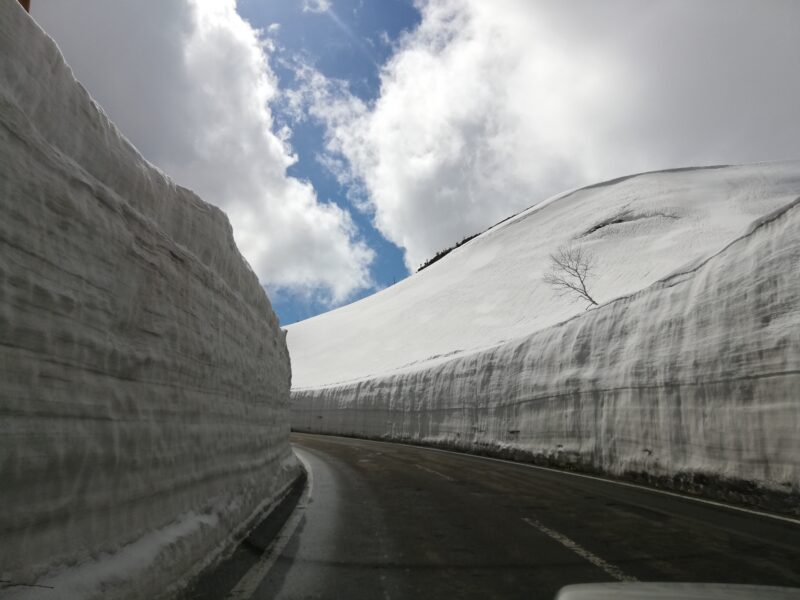
In summer, there are fresh greenery and flowers, in autumn, the autumn leaves are woven by beech and maple, and in winter, the ice trees and snotrekking and skiing. This changing scenery through the seasons is one of the great charms that will never get bored of any number of visits to Hachimantai. The autumn leaves in particular are considered one of the most beautiful in Tohoku, with colorful leaves that color the mountainside from late September to mid-October.
Hachimantai as a land of war history and mountain faith
There are several theories about the origin of the name Hachimantai.
According to one theory, it is said that this is due to the fact that Sakanoue Tamuramaro In the mountains, there are also places related to the battle, such as Genta Tadayoshi, a servant of Sakaue Tamuramaro, and Genta Mori, which is said to have hid in search of the Emishi trends by the brothers of Tadaharu. This leaves behind a sense of the history of the battle that has been said to have happened before.
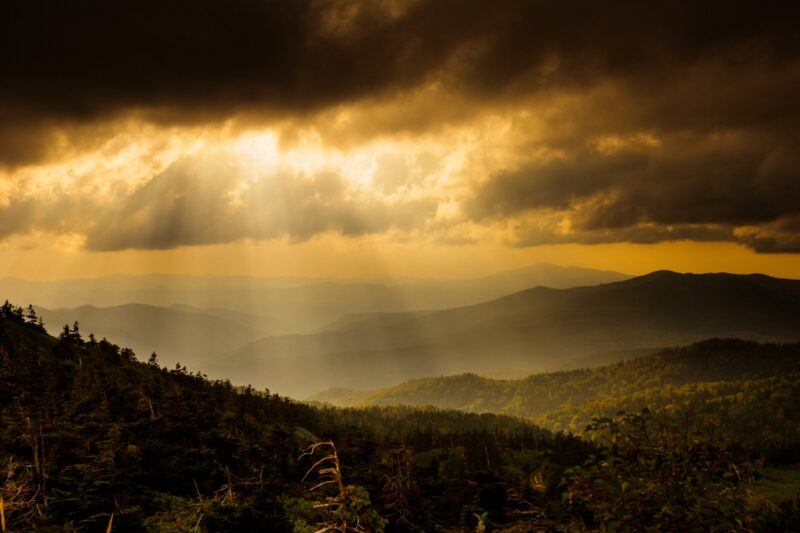
It has also been revered since ancient times as a sacred place for locals to live in the mountain gods, and even today, small shrines and stone monuments are scattered around the mountain trail. These are the objects of faith that pray for the safety of the mountains, and are also markers and spiritual support for climbers.
There are also records that during the Edo period, Shugenists went through Hachimantai and then crossed the Ou Mountains and used them as a place for training. In addition, according to ancient documents and local oral traditions, it is said that mountain faith and Hachiman God have been combined to develop a unique ritual system of the region.
In recent years, these shrines and religious remains have been investigated and developed in order to protect the environment and cultural properties, and re-evaluation has been progressing as a "place of living faith" that is more than just a tourist destination. Hachimantai is a place that is not only rich in nature, but also in terms of cultural and spiritual values.
summary
Hachimantai coexists with a well-maintained course that even beginners can visit easily with untouched nature. It is easily accessible, about 2 hours by car from the city, making it perfect for weekend excursions and day trips. It is rich in learning elements such as nature observation, geology, and botany, making it a great choice for families.
This area, known as the "paradise of the plateau", has a wide variety of ways to enjoy it, from quiet mountain strolls to relaxing in hot springs. Dragon Eye in Spring, Alpine Plants in Summer, Red Foliage in Autumn, and Ice Trees in Winter. Hachimantai is welcoming you with a different look no matter when you visit, and is a place where you can experience the wonders of a journey in harmony with nature.
Hachimantai<Information>
- Name: Hachimantai
- Address: The summit is near the prefectural border of Hachimantai City, Iwate Prefecture to Senboku City, Akita Prefecture
- Phone number: -
- Official URL: Iwate Prefecture's official tourism website "Iwate Journey" - Hachimantai




![[Tohoku Autumn Leaves Driving Map: Iwate Edition] 3 Recommended Driving Courses and Local Cuisine! Autumn leaves in Hachimantai](https://jp.neft.asia/wp-content/uploads/2024/10/25627275_m-150x150.jpg)

![Altitude of 1,600 meters. The closest to the star in Japan, the Jodohira Observatory [Fukushima Prefecture] 3867650_m](https://jp.neft.asia/wp-content/uploads/2022/07/3867650_m-150x150.jpg)
![[Semboku City, Akita Prefecture] It's best to see both the man-made autumn leaves of Kakunodate and the natural autumn leaves of Dakigaeri Valley. Higashishorakucho_Semboku City](https://jp.neft.asia/wp-content/uploads/2025/08/c70a99377a4bb64de3c1f83babf0ea49-150x150.jpg)
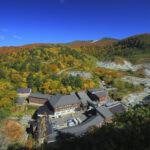
![Urabandai is attractive for its beautiful scenery created by the powerful volcanoes and the beautiful lakes and small lakes [Fukushima Prefecture] Urabandai scenery](https://jp.neft.asia/wp-content/uploads/2023/02/22387665_m-150x150.jpg)
![The specialty of Genbikei, "Flying Dango," is definitely worth a visit! Delicious activities! [Ichinoseki City, Iwate Prefecture] Genbikei bus stop](https://jp.neft.asia/wp-content/uploads/2017/04/IMG_5931-150x150.jpg)
![[Miyagi Prefecture Katta District] The frost-covered field is a rare and spectacular view that can only be found in Tohoku! Let's go see the ice monster! 8a0cf731815dbc4ec787cc6cff7d4cc1_m](https://jp.neft.asia/wp-content/uploads/2018/04/8a0cf731815dbc4ec787cc6cff7d4cc1_m-150x150.jpg)
